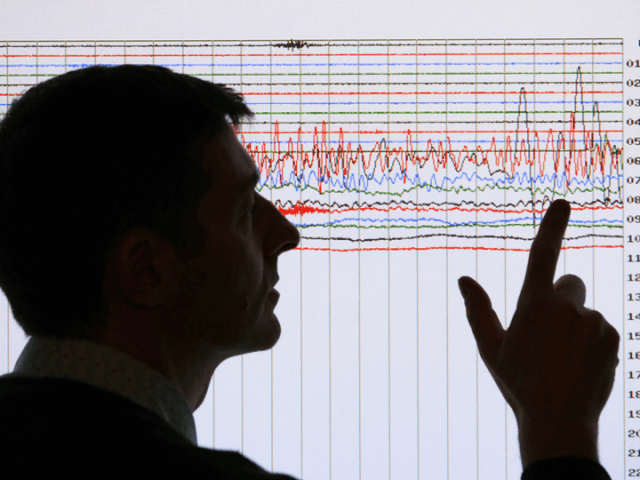A bipartisan coalition of Democrats and Republicans is fighting to prevent the privatization of the ShakeAlert earthquake warning system and to preserve its federal funding.
The initial 1,600-page long FY 2018 federal budget deal struck between President Trump and Congress on April 30 would have increased funding for the U.S. Geological Survey (USGS) “ShakeAlert” earthquake early warning system the system from $8.2 to $10.2 million.
But the USGS budget plan issued in May proposes to cut staffing by 1,089 existing positions, or about 14 percent, to eliminate $137.8 million from USGS’s $1.06 billion budget. That works out to a cost-per-employee of about $126,538.
Rep. Ken Calvert (R-CA), chair of the House Appropriations Subcommittee, which oversees USGS at the Interior Department, tweeted about ShakeAlert, “I don’t think there is any appetite, at least from the House in Congress, to remove it. We have made too much progress on the earthquake warning system to stop now.” He was joined in demanding funding by Rep. Adam Schiff (D-CA).
USGS stated that ShakeAlert was developed “with university, state and private-sector partners,” and Version 1.2 was rolled out April 10. The system tracks different types of seismic “P-waves” that travel at varying speeds and can provide from a few seconds up to 2 minutes of advanced warning that very dangerous S-waves could be imminent.
Proponents argue that ShakeAlert could come online in a year, with another $38.2 million to expand the California system to cover the West Coast, and $16.1 million a year for operations and maintenance costs, according to the Los Angeles Times.
USGS states that its mission is to “deliver integrated scientific understanding and forecasts of natural systems to improve the Nation’s economic well-being.”
But the Obama administration politicized USGS by spiking funding for climate science centers, and promoting research on carbon sequestration to support “scientific research and managing landscapes for climate resilience as well as expanding public access to climate-related information,” according to the hard-left Salon.
According to the USGS “Prioritization of Science Needs,” the agency’s FY 2018 budget maintains funding to support critical responsibilities, but eliminates funding for some activities that are “more appropriately funded by USGS partners and those that have reached milestones allowing research to continue without further USGS support.”
The comment refers to the fact that with the federal government investing $23.4 million investment to develop and install the ShakeAlert’s below-ground monitoring stations, the early warning system could be privatized — sold to an entity like Amazon or the Weather Channel, which would probably pay the USGS royalties to operate it.
In the digitized Internet of Things (IOT) world, ShakeAlert would give valuable time for utility safety valves to close, electricity to be rerouted, computers to back up, trains to slow and a myriad of other business and emergency related units to begin responding.
But privatizing USGS activities draws opposition, partly due to lobbying from a highly-compensated federal workforce.
Annual federal civilian compensation costs per worker average $123,160, or 76 percent more than the average of $69,901 private-sector compensation costs per worker. Civilian federal workers earn average wages of $86,365 and benefits of $36,795, whereas the 112 million private-sector workers averaged wages of $58,726 and $11,175 in benefits, according to the a recent “Downsizing the Federal Government” study.
The study found that for 2.1 million government employees, “The federal government has become an elite island of secure and high-paid employment,” separated from an ocean of 112 million private-sector “Americans competing in the economy.”

COMMENTS
Please let us know if you're having issues with commenting.